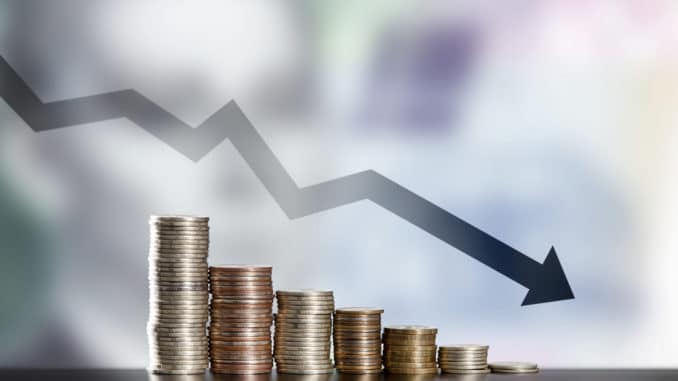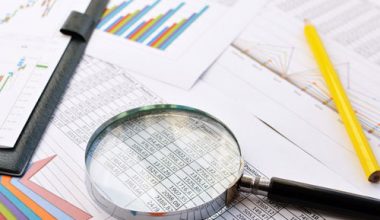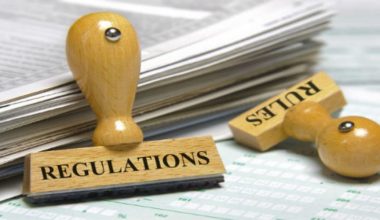People often think that depreciation means anything that loses value or is a tax calculation. Depreciation is an important part of your company’s tax returns, but it’s hard to understand. Keep scrolling to understand depreciation, its several types, how to calculate fixed assets using a formula, how to depreciate assets, and why to depreciate assets.
What is Depreciation?
Depreciation is an accounting method for allocating the cost of a tangible or physical asset over its useful life. It is a measure of how much of an asset’s value has been used. It enables businesses to generate revenue from assets they own by paying for them over time.
The immediate cost of ownership is greatly lowered because companies do not have to account for them fully in the year the assets are purchased. Accounting for depreciation incorrectly can have a significant impact on a company’s profits. Companies can also depreciate long-term assets for tax and accounting purposes.
Machinery and equipment are expensive assets. Companies can use depreciation to spread out the cost of an asset and match depreciation expenses to related revenues in the same reporting period, instead of recognizing the full cost of an asset in the first year. This enables a firm to deduct the value of an asset over time, most notably over its usable life.
Companies regularly depreciate their assets so that the costs of their assets can be moved from their balance sheets to their income statements. When a company buys an asset, the transaction is recorded as a debit to increase an asset account on the balance sheet and a credit to decrease cash (or increase accounts payable) on the balance sheet.
Types of Depreciation
Accounting employs several methods. The following are the four major types of depreciation.
#1. Straight-line method
This is the most basic and direct form of depreciation. It spreads the value of an asset out over several years so that you pay the same amount each year that the asset is useful. Straight-line depreciation is a good choice for small businesses with simple accounting systems or for businesses where the owner prepares and files the tax return.
Depreciation formula: Divide the cost of the asset (minus its salvage value) by the number of years you think it will be useful. The “salvage value” is the amount of money the item is expected to be worth at the end of its useful life. Here’s how the formula looks: (Asset cost – salvage value) / Asset useful life = Depreciation expense
#2. Double-declining method
This method, also known as “declining balance depreciation,” allows you to write off more of an asset’s value immediately after purchase and less as time goes on. This is an excellent alternative for businesses that wish to recoup a larger portion of the asset’s value right away rather than waiting a predetermined number of years, such as small businesses with high startup costs and a need for extra cash.
Depreciation formula: 2 x (single-line depreciation rate) x (book value at the beginning of the year). You might also use a double-declining calculator. The “book value” of an asset is its cost minus the amount of depreciation already taken.
#3. Sum of the years’ digits depreciation
Sum of the years’ digits (SYD) depreciation is a faster way to figure out how much something has lost in value. It is similar to the double-declining method. SYD estimates a weighted percentage depending on the asset’s remaining useful life, rather than decreasing the book value.
Depreciation formula: (remaining lifespan/SYD) x (asset cost–salvage value). To begin, calculate the SYD by adding the digits for each depreciation year.
#4. Units of production depreciation
This is a straightforward method for depreciating the value of an asset based on how frequently it is used. “Units of production” might relate to something made by the equipment, such as the number of pizzas that can be made in a pizza oven or the number of hours it is in use. This method is suitable for companies that want to depreciate equipment that produces a quantifiable and widely approved (i.e., according to the manufacturer’s requirements) output during its useful life.
Depreciation formula: (Asset cost – Salvage value) / Units produced in the usable life
Depreciation Formula
The depreciation formula is used to determine how much of an asset’s value can be deducted as an expense on the income statement. depreciation on equipment and machinery, furniture and fixtures, automobiles, and other tangible fixed assets, for example.
Depreciation can be calculated in three ways:
- Straight-Line Method
- Unit of Production Method
- Double Declining Balance Method
The straight-line method depreciation formula is expressed by dividing the difference between the asset cost and the residual value by the asset’s useful life. It is expressed mathematically as,
Depreciation = (Asset Cost – Residual Value) / Asset Useful Life
For the unit of production method, the depreciation formula is found by dividing the difference between the cost of the asset and its remaining value by its lifetime production capacity. This number is then multiplied by the number of units produced during the period. It is expressed mathematically as,
Depreciation = (Asset Cost – Residual Value) / Life-Time Production * Units Produced
Under the double-declining balance method, the formula for depreciation is to divide the difference between the cost of the asset and the total amount of depreciation by the asset’s useful life, then multiply by 2. It is expressed mathematically as,
Depreciation = 2 * (Asset Cost – Accumulated Depreciation) / Useful Life of Asset
Depreciation of Fixed Assets
Is your company reliant on assets that necessitate large investments? Office space, machinery, equipment, and other tools aid in the delivery of services to clients. That means you must understand how to depreciate fixed assets. Whatever you do, the value of your assets decreases with usage and time.
A Step-by-Step Guide to Fixed Asset Depreciation
When you calculate depreciation, you are calculating the total cost of using your fixed assets over their useful life. Including this on your balance sheet will assist your company in accurately calculating its finances. After all, this will provide you with accurate quarterly financial accounts.
Step 1: Decide which assets to depreciate
Trying to depreciate all of your assets might not be the best idea. Short-term assets that do not stay in your business for an extended period should not be depreciated. Lower-value assets may not need to go through the process, but they should still be tracked.
The IRS has established certain depreciation guidelines. Real estate has a depreciation life cycle of 27.5 years, whereas non-real estate fixed assets such as vehicles and computers have a life cycle of 5 years. If you have assets with a limited lifespan, depreciation may not be worth it.
Step 2: Determine it factors
There are various elements to consider when calculating depreciation on your balance sheet. The key one is the asset’s useful life. How long do you anticipate using the items? Once it has reached the end of its useful life, you will compute the salvage value, if applicable.
Step 3: Streamline your depreciation
To do this, it subtracts the scrap value from the initial cost of the asset and divides that number by how long the asset is expected to last.
Assume you’re attempting to compute the depreciation of your server software. Installing it will cost you $50,000. The scrap value is estimated to be $10,000, and the life expectancy is 10 years. You would deduct $10,000 from $50,000 to arrive at $40,000. Then, divide that figure by 10 to get $4,000 in depreciation per year using this method.
Step 4: Calculate and save asset information using specialized software.
You’ll need to save your depreciation value once you’ve determined it. It makes no sense to keep it separate from the rest of your asset information; therefore, find a way to include it in your asset database.
Step 5: Regularly depreciate fixed assets
You’ll need to check in on your fixed assets regularly to monitor depreciation. Make it a habit to review your company’s balance sheet every six months and compare current numbers to earlier estimates. This will help you figure out if the asset needs any changes to make it last longer.
How to Depreciate Assets
Most businesses depreciate assets using the straight-line method for accounting purposes.
Here’s what you’ll need to figure out how to depreciate assets:
- Asset useful life: The number of years you plan to use the asset. You can calculate your own useful life for book purposes. The useful life for tax depreciation is determined by the type of asset. Your accountant can assist you in determining the useful life of a particular asset.
- Minus salvage value: This is the asset’s value at the end of its useful life. The salvage value is usually an estimate. You can alternatively choose zero as the asset’s salvage value, especially if you intend to use the item for an extended period.
- Divided by the asset cost: this covers all acquisition costs such as sales tax, transportation, set-up, and training.
The book value of an asset is its original cost less any depreciation claimed on that asset.
Why Depreciate Assets?
We depreciate assets so that the financial situation of an activity is more accurately reflected, so that we can account for the loss of value over time, and so that, in the case of self-supporting units, we have enough money to replace the item when it has reached the end of its useful life.
What is a depreciating asset?
Depreciating an asset means deducting the asset’s value from its estimated useful life. The asset’s value depreciates over time, and you can deduct a specific amount as an expense against taxes each year.
Why do you depreciate assets?
This is because fresh assets are often more valuable than older ones.
When should I depreciate an asset?
Depreciating an asset starts when it is ready for use, that is when it is in the location and condition required for it to operate in the manner planned by management.
Is a car a depreciating asset?
Yes. Your car is a depreciating asset in accounting terms. This means your vehicle may be valued right now and you could sell it. However, the value of the car normally decreases with time.
What is an example of depreciation?
Let’s say a company buys $50,000 worth of equipment and has to decide whether to spend the whole amount in the first year or write off the asset’s value over its 10-year useful life.
How long can you depreciate an asset?
The number of years that an asset can depreciate is referred to as its useful life. Each type of asset has a certain life defined by tax legislation. Real estate is a 39-year asset, office furniture is a 7-year asset, and automobiles and trucks are a 5-year asset. See How to Depreciate Property, Publication 946.
How do you fully depreciate an asset?
There are two ways for an asset to be fully depreciated: The asset has reached the end of its useful life. There has been an impairment to the asset, which has been written down to zero.
What are the 4 methods of depreciation?
They are as follows:
- Straight line method.
- Diminishing balance method.
- Sum of years’ digits method.
- Double declining balance method.
What happens if you forgot to depreciate an asset?
If you don’t depreciate an asset, the IRS thinks you’re using an incorrect accounting method. You can only fix this by filing Form 3115.
Conclusion
Depreciation is an expense, which means it appears on your income statement as a line item and affects net income. Many small business owners don’t understand it because the cash flow doesn’t match up with the expenses on the income statement.
Related Articles
- BONUS DEPRECIATION: Definition, Example, and Rate For 2023
- DEPRECIATION ACCOUNTING: Definition, Methods, Formula & All You Should Know
- STRAIGHT LINE DEPRECIATION: How to Calculate Straight Line Depreciation
- Is It Worth Getting A Car Loan?
- DEPRECIATION: Definition, How to Calculate It, and Causes






